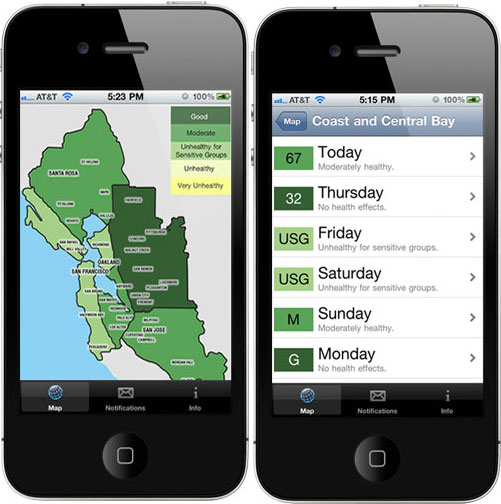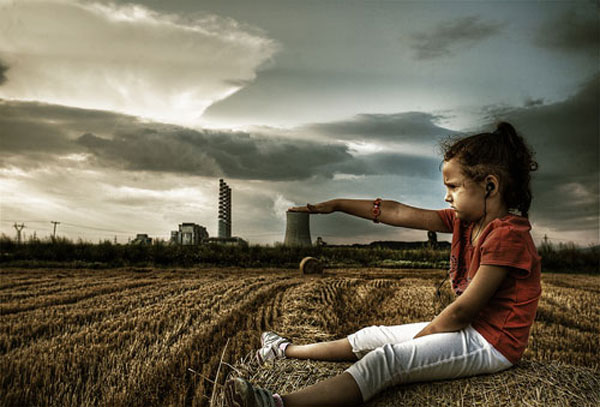 There’s a breath of fresh air coming from that smartphone you covet in your purse or pocket. It can track air pollution exposure where you live. The National Institutes of Health recently funded a two-year grant to University at Buffalo for exploring data that will link air pollution to location with the study participants’ smartphones.
There’s a breath of fresh air coming from that smartphone you covet in your purse or pocket. It can track air pollution exposure where you live. The National Institutes of Health recently funded a two-year grant to University at Buffalo for exploring data that will link air pollution to location with the study participants’ smartphones.
This app comes about at a time when smartphones and air pollution are on the rise. Smartphones contain a rich set of sensors that include cameras, GPS systems, compasses and accelerometers, and powerful communication capabilities. This has inspired phone technology companies to competitively clamor to create applications that allow their phone users to help monitor air quality. The smartphone app designed for this study will measure the person’s location frequently using the GPS receiver, and track air pollution right from the GPS.
"This project will develop a method that will improve our ability to estimate human exposures to air pollutants, and will improve public health by allowing researchers to more accurately measure human exposures and relate these exposures to health outcomes."
What is the purpose of the app?
The primary purpose is to provide research that links an individual’s health information to their air pollution exposure. The design of the app will give the user an instantaneous or near-instantaneous estimate of air pollution exposure.
How the app will work?
Data from the GPS will stream from the smartphone to researchers server. Scientists will use the information models of air pollution exposure based on person’s location, how close they are to a major road, how densely populated the area is; depending upon the particular time of day and time of year.
Why is it important to track air quality?
With asthma rates on the rise, and some politicians and CEO’s vying to delay, deregulate or ditch the Clean Air Act, research on air pollution and its health effects can help fuel the fight for clean air. Using residential addresses to measure pollutant exposures, researchers will be able to work with public officials to estimate and improve air pollution exposures in certain areas. It can provide for the data for stronger regulations for clean air.
What's in the air?
Power companies, most notably coal-fired power plants emit mercury, and 84 different hazardous air pollutants that cause adverse health effects. Here are just 5 nasty emissions:
1. Carbon Monoxide – Sources of carbon monoxide come from worn or poorly maintained combustion devices, vehicle exhaust and power plant emissions. Acute effects of carbon monoxide can be counted in the formation of carboxyhemoglobin in the blood, which inhibits oxygen intake. At moderate concentrations, angina, impaired vision, and reduced brain function may result. At higher concentrations, CO exposure can be fatal.
2. Nitrous Oxides - From vehicle and smokestack exhaust compromises lung functions and can cause respiratory and viral illness. This is exacerbated in children.
3. VOCs - VOCs react with sunlight and nitrous oxide to form ground level ozone. This is capable of traveling thousands of miles. Once the VOC’s hit ground level, health conditions such as asthma and lung disease are adversely affected.
4. Sulphur Dioxide - Created by the combustion of fossil fuels containing sulphur compounds, contributes to various lung conditions even at moderate levels of concentration.
5. Fine Particles and Soot - Dusts, sulphates and nitrates are emitted from road traffic and power plants. These fine particles can be carcinogenic. They easily pass through the lungs into the bloodstream, causing inflammation and serious conditions, particularly in children and animals.
On the horizon…
For smartphones in the Los Angeles area running the Android system, the experimental Visibility app is being tested near a conventional air pollution monitoring station. The iSmog app by Apple similarly displays a map of smoggy air and air pollution alerts in the Bay area.
Exposure to air pollutants is largely beyond one individual's control. It will require action at the regional, national, international levels…and each and every one of us. By joining the Moms Clean Air Force, you can help us advocate for the need to continue providing technology tracking, which will assist in eradicating air pollution for our children.
The more we study, track and regulate air pollution, the easier our kids will breathe.
Credit: iTunes

 After listening to a
After listening to a 